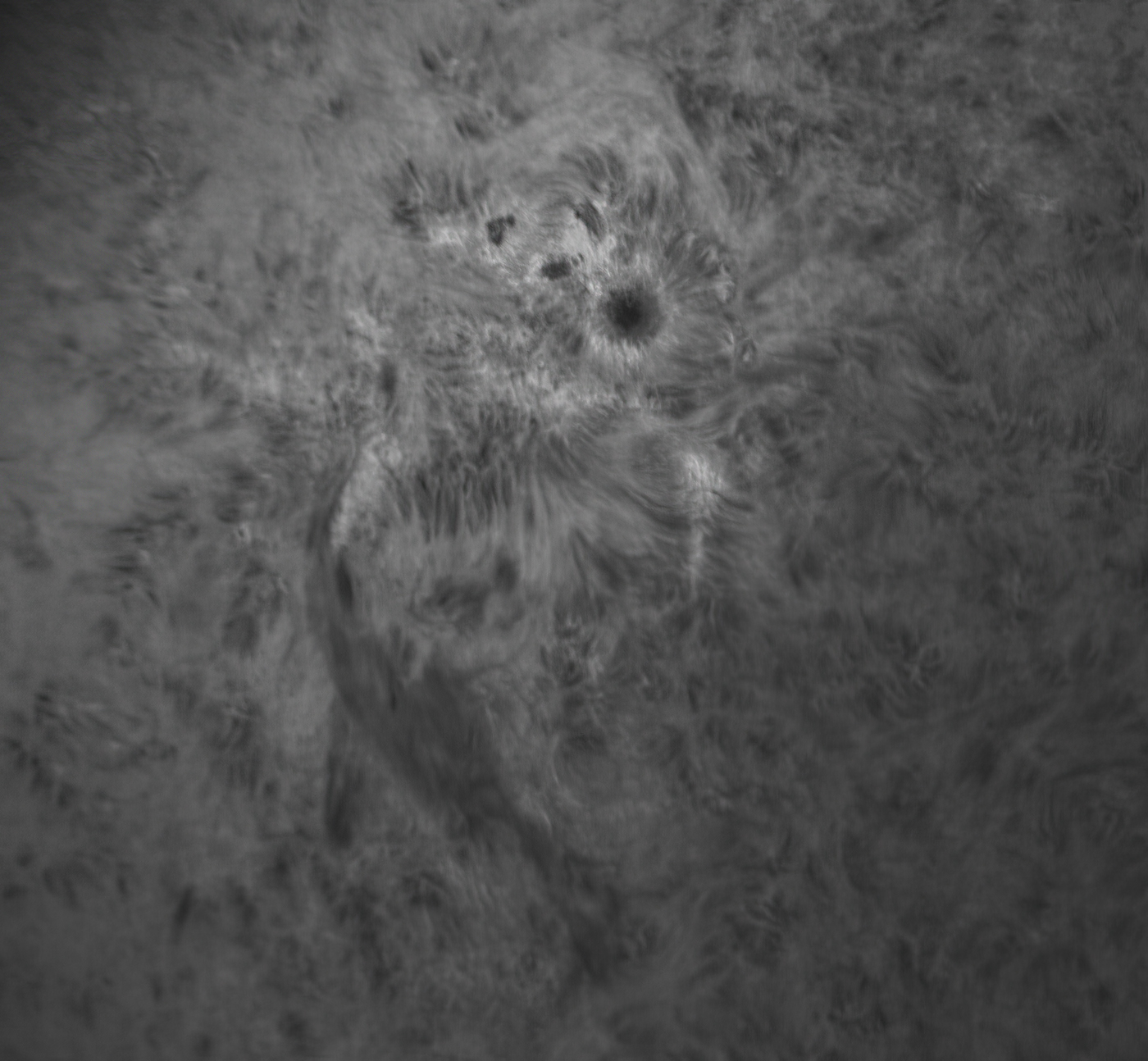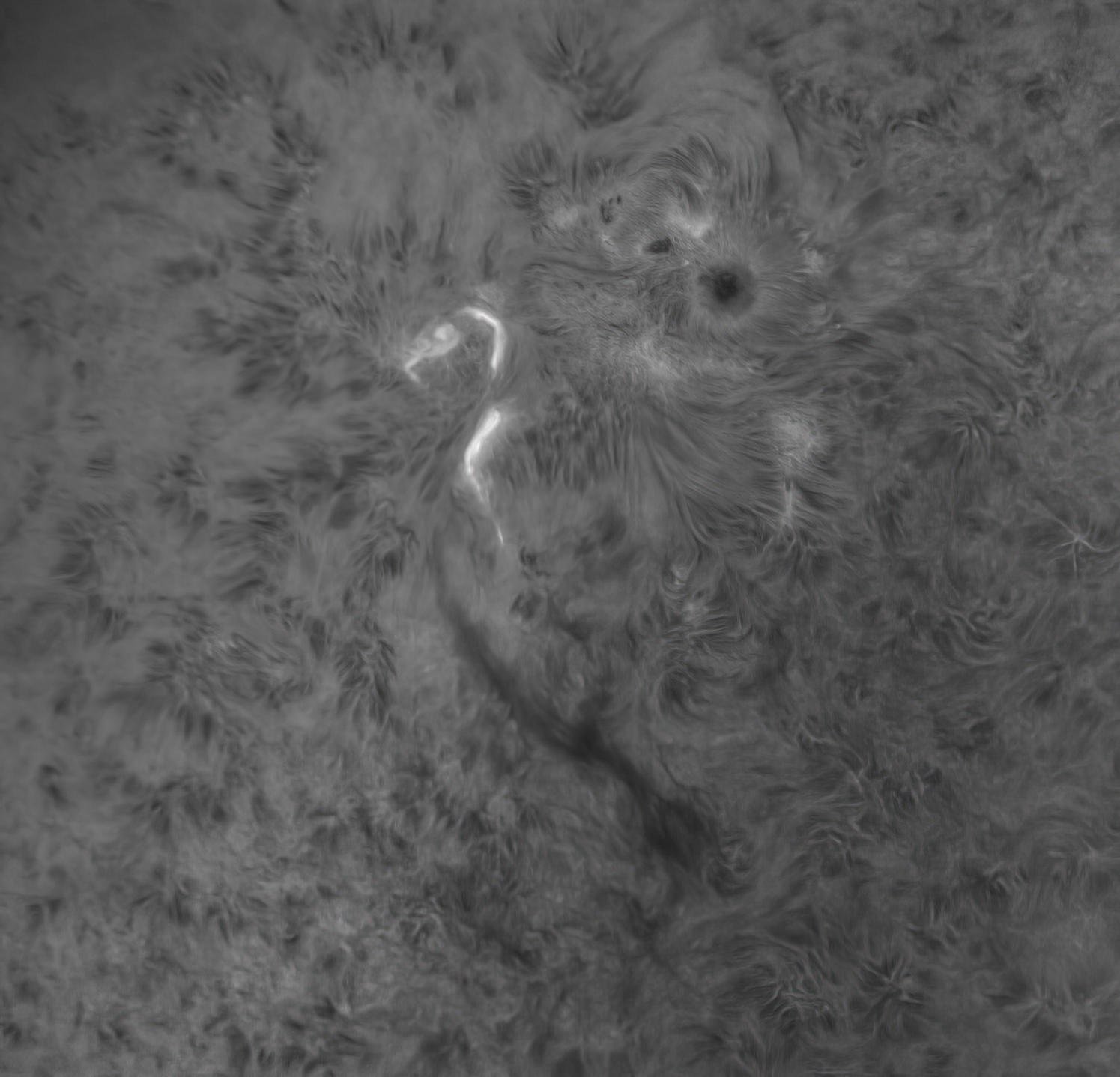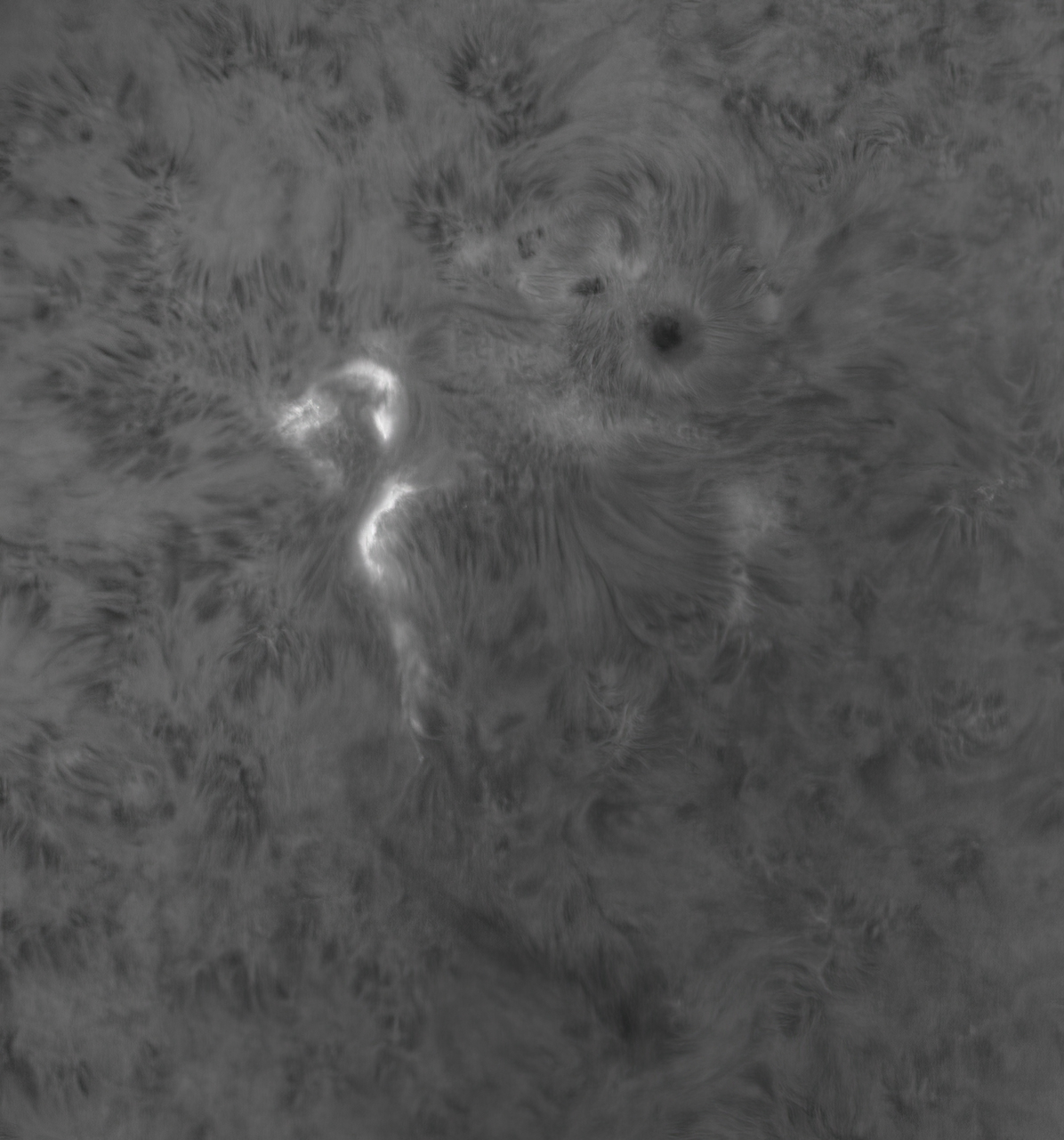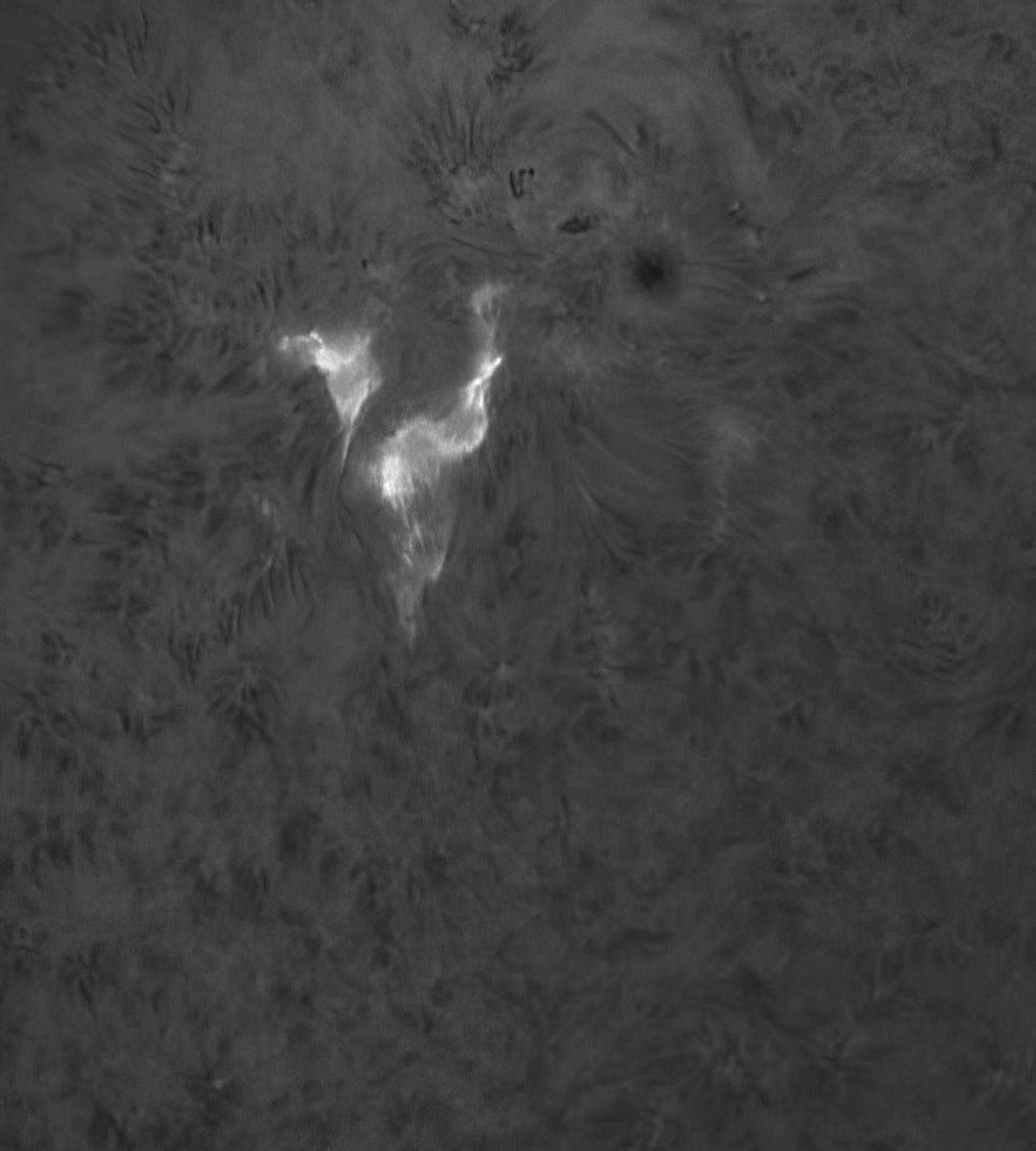| |
A bright flare erupted
08/26/2021. In the afternoon, while I watched, a bright flare erupted in the simpler of two significant active regions on the face of the Sun.




The times are 1:27, 2:00, 2:06, and 2:30 PM. Between the first and second, I was checking out a more complex sunspot region at about the same heliocentric longitude but in the opposite hemisphere. SpaceWeather indicated that the sunspot cores were too far apart to produce significant flares, but I wanted to check. Nothing much was happening. When I got back to this isolated spot, those bright threads had appeared, and as I watched, a C-class flare spread and intensified. Note in the fourth frame how dark the face of the Sun is. I had to cut the exposure time by two stops to keep from burning out the flare. About 12 hours later, the other, more complex group threw a M4.2 flare. The smart money says it is as likely as not to throw an X-flare in the next several days.
My deep-sky photos are made with a variety of sensors and optics. Deepest images come now from a ZWO ASI1600MM Cooled Pro CMOS camera, an ASIair (model 1) and sometimes one of several laptops. A good many images come from an unmodded Canon 6D but a lot more will be coming from an R6. Video and video extracts begin in a Canon EOS M, usually running in crop mode via Magic Lantern firmware (but the 6D and especially the R6 will probably see more use). Telescopes include an AT10RC, an Orion 10" F4 Newtonian, and a pair of apochromats: a TMB92SS and a AT65EDQ. A very early Astro-Physics 5" F6 gets some use, too. So do lots of camera lenses on both the ASI1600 and on the Canons. A solar Frankenscope made using a 90mm F10 Orion achromat and the etalon, relay optics, and focuser from a Lunt 60 feeding a small ZWO camera will see more action as the Sun comes back to life (Autostakkart!3 is my current fav for image stacking). Mounts include an iOpton SkyTracker (original model), a bargain LXD-55, a Losmandy G11 (492 Digital Drive), and an Astro-Physics Mach1. PixInsight does most of the heavy lifting; Photoshop polishes. Some of the toys are more or less permanently based in New Mexico. I desperately hope to get back soon.
:: top ::
|